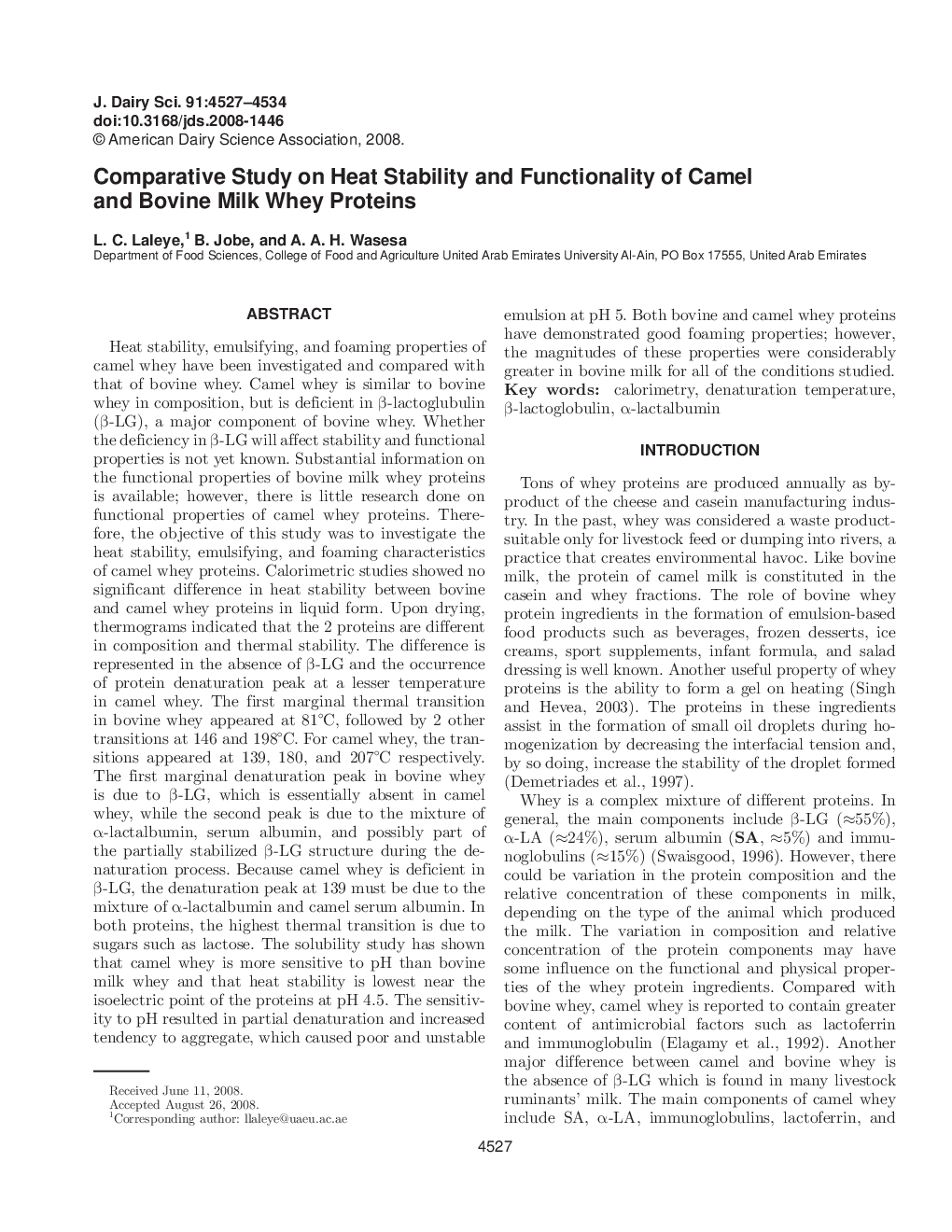| کد مقاله | کد نشریه | سال انتشار | مقاله انگلیسی | نسخه تمام متن |
|---|---|---|---|---|
| 2439788 | 1108105 | 2008 | 8 صفحه PDF | دانلود رایگان |

Heat stability, emulsifying, and foaming properties of camel whey have been investigated and compared with that of bovine whey. Camel whey is similar to bovine whey in composition, but is deficient in β-lactoglubulin (β-LG), a major component of bovine whey. Whether the deficiency in β-LG will affect stability and functional properties is not yet known. Substantial information on the functional properties of bovine milk whey proteins is available; however, there is little research done on functional properties of camel whey proteins. Therefore, the objective of this study was to investigate the heat stability, emulsifying, and foaming characteristics of camel whey proteins. Calorimetric studies showed no significant difference in heat stability between bovine and camel whey proteins in liquid form. Upon drying, thermograms indicated that the 2 proteins are different in composition and thermal stability. The difference is represented in the absence of β-LG and the occurrence of protein denaturation peak at a lesser temperature in camel whey. The first marginal thermal transition in bovine whey appeared at 81°C, followed by 2 other transitions at 146 and 198°C. For camel whey, the transitions appeared at 139, 180, and 207°C respectively. The first marginal denaturation peak in bovine whey is due to β-LG, which is essentially absent in camel whey, while the second peak is due to the mixture of α-lactalbumin, serum albumin, and possibly part of the partially stabilized β-LG structure during the denaturation process. Because camel whey is deficient in β-LG, the denaturation peak at 139 must be due to the mixture of α-lactalbumin and camel serum albumin. In both proteins, the highest thermal transition is due to sugars such as lactose. The solubility study has shown that camel whey is more sensitive to pH than bovine milk whey and that heat stability is lowest near the isoelectric point of the proteins at pH 4.5. The sensitivity to pH resulted in partial denaturation and increased tendency to aggregate, which caused poor and unstable emulsion at pH 5. Both bovine and camel whey proteins have demonstrated good foaming properties; however, the magnitudes of these properties were considerably greater in bovine milk for all of the conditions studied.
Journal: Journal of Dairy Science - Volume 91, Issue 12, December 2008, Pages 4527–4534